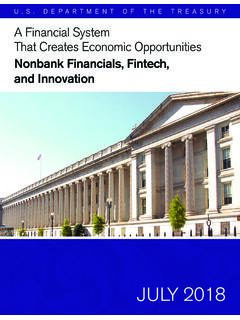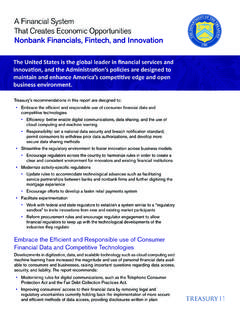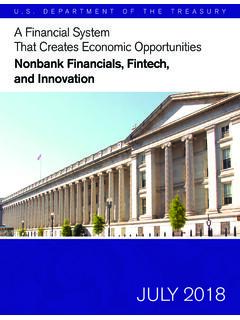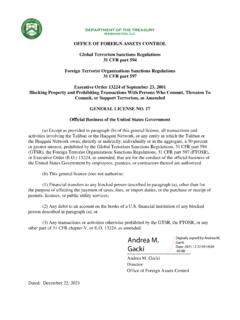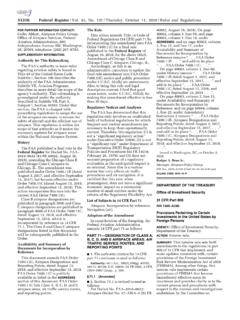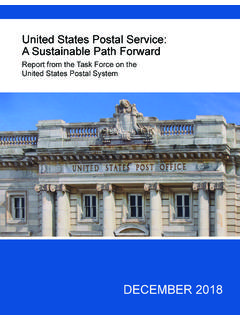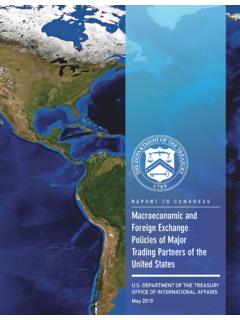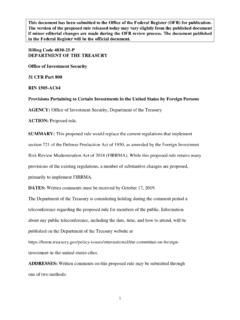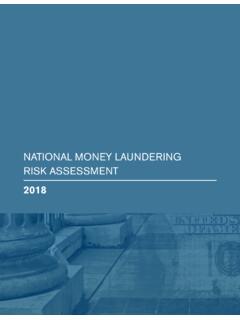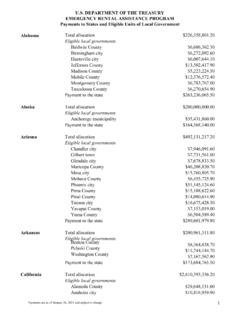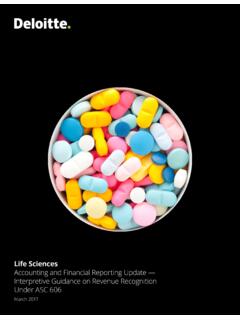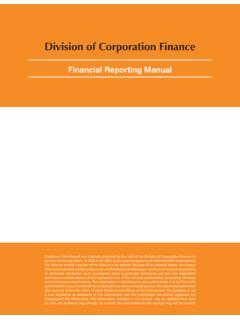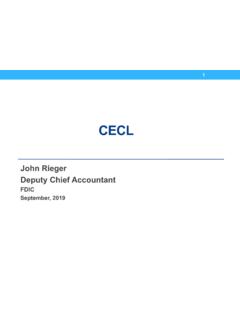Transcription of National Strategy for Combating Terrorist and Other ...
1 National Strategy FOR Combating Terrorist AND Other ILLICIT FINANCING2020 National Strategy for Combating Terrorist and Other Illicit Financing1 Table of ContentsEXECUTIVE SUMMARY ..3 INTRODUCTION ..5I. How Illicit Proceeds Enter the United States and financial System ..7A. Threat Overview ..81. Money Laundering ..92. Terrorist Financing ..113. Proliferation Financing ..12B. Vulnerability Overview ..121. Beneficial Ownership Requirements at Company Formation ..132. Real Estate Professionals, Other financial Services, and Key Gatekeeper Professions ..163. Correspondent Banking ..214. Cash ..235. Complicit Professionals ..266. Compliance Weaknesses ..287. Digital Assets ..298. Money Services Businesses.
2 339. Securities Broker-Dealers ..3510. Casinos ..35II. Strengthening the AML/CFT Framework ..36A. Existing AML/CFT Framework ..36B. Objectives of an Effective AML/CFT Regime ..37C. Making the AML/CFT Framework More Effective: Priorities and Supporting Actions ..38D. Increase Transparency and Close Legal Framework Gaps ..39 National Strategy for Combating Terrorist and Other Illicit Financing21. Require the Collection of Beneficial Ownership Information by the Government at Time of Company Formation and After Ownership Changes ..402. Minimize the Risks of the Laundering of Illicit Proceeds Through Real Estate Purchases ..403. Extend AML Program Obligations to Certain financial Institutions and Intermediaries Currently Outside the Scope of the BSA.
3 404. Clarify or Update our Regulatory Framework to Expand Coverage of Digital Assets ..41E. Continue to Improve the Efficiency and Effectiveness of Regulatory Framework for financial Institutions ..421. Improve Efficiency of Existing reporting Obligations ..422. Emphasize the Risk-focused Approach to Supervision ..423. Foster Responsible Innovation ..43F. Enhance the Current AML/CFT Operational Framework ..441. Improve Communication of Priority Illicit Finance Threats, Vulnerabilities, and Risks ..442. Expand the use of Artificial Intelligence and Data Analytics ..453. Creatively and Effectively Deploy Targeted Measures to Disrupt Illicit Finance Activity ..454. Enhance Use of Public-Private Partnerships and Other Information Sharing.
4 485. Support Global AML/CFT Implementation ..49 CONCLUSION ..52 National Strategy for Combating Terrorist and Other Illicit Financing3 EXECUTIVE SUMMARYThe United States has the world s most comprehensive and effective anti-money laundering and countering the financing of terrorism (AML/CFT) regime. It includes a strong legal foundation; robust interagency and intergovernmental coordination and information sharing; active and well-resourced operational, supervisory, and enforcement mechanisms; and extensive collaboration between the public and private these elements have made the United States a global leader in Combating illicit finance, we live in an interconnected and mobile world where terrorists, money launderers, weapons of mass destruction (WMD) proliferators, and Other criminals and malign actors take advantage of the size and stability of our financial system and the ubiquity of the dollar and explore new ways to exploit financial services and payments.
5 The AML/CFT regime must keep pace with these changes so that the United States can stay ahead of evolving illicit finance we mark the 50th anniversary of the enactment of our first AML/CFT law,1 this 2020 National Strategy for Combating Terrorist and Other Illicit Financing (2020 Strategy ) employs a whole-of-government approach to guide the public and private sectors in addressing 21st century illicit finance challenges. It lays forth a vision to further the USA PATRIOT Act s purpose to increase the strength of United States measures to prevent, detect, and prosecute international money laundering and the financing of terrorism. 2 The 2020 Strategy is organized around the principle that a strong and transparent financial system, one that denies criminals and malign actors access to the funds and resources they need to carry out nefarious activities or to profit from their crimes, strengthens National security and protects Americans.
6 The 2020 Strategy builds on the 2018 National Strategy for Combating Terrorist and Other Illicit Financing (2018 Strategy ) and its three supporting National risk assessments on money laundering, Terrorist financing, and proliferation It identifies the following as the most significant threats and vulnerabilities that allow illicit proceeds to enter the United States and financial The Currency and Foreign Transactions reporting Act of 1970 was the first AML law passed in the United States. This statute requires financial institutions to keep records of cash purchases of negotiable instruments, and file reports of cash transactions exceeding $10,000 (daily aggregate amount). Many laws with AML/CFT components have amended this statute, adding important requirements, such as suspicious activity report-ing and customer identification and due diligence.
7 These laws and their implementing rules and regulations are collectively referred to as the Bank Secrecy Act (BSA). See 31 5311-5330 and 31 Chapter USA PATRIOT ACT, Pub. L 107-66, Sec. 302(b)(1), Oct. 26, The 2018 National Illicit Finance Strategy and its supporting risk assessments are available at Strategy for Combating Terrorist and Other Illicit Financing4 IIIIIIIIIIIIIIIIII$$Key Illicit Finance ThreatsKey Vulnerabilities Exploited Lack of Beneficial Ownership Information Real Estate Cash Complicit Professionals Correspondent Banking Uneven AML Obligations Compliance Weaknesses Digital Assets WMD Proliferation Financing Drug Trafficking Money Laundering from Various Crimes Including Fraud Organized Crime Human Trafficking Terrorist Financing Corruption The 2020 Strategy focuses government efforts along the following key priorities and sup-porting actions.
8 Many of which are already underway, to strengthen and make the AML/CFT regime more effective, efficient, and responsive to an evolving threat environment. Priorities and Supporting Collection of Beneficial Ownership Information by the Government at Time of Company Formation and After Ownership the Risks of the Laundering of Illicit Proceeds Through Real Estate AML Program Obligations to Certain financial Institutions and Intermediaries Currently Outside the Scope of the or Update our Regulatory Framework to Expand Coverage of Digital AssetsIncrease Transparency and Close Legal Framework Gaps Communication of Priority Illicit Finance Threats, Vulnerabilities and the use of Data Analytics and Artificial and Effectively Deploy Targeted Measures to Disrupt Illicit Finance use of Public-Private Partnerships and Other Information Global AML/CFT ImplementationEnhance the Current AML/CFT Operational FrameworkContinue to Improve the Efficiency and Effectiveness of Regulatory Framework for financial the Efficiency of Existing reporting the Risk-focused Approach to Responsible InnovationNational Strategy for Combating Terrorist and Other Illicit Financing5 INTRODUCTIONP ursuant to Sections 261 and 262 of the Countering America s Adversaries Through Sanctions Act (CAATSA)
9 ,4 this 2020 Strategy is an update to the evaluation of existing efforts identified in the inaugural 2018 Strategy . The 2020 Strategy was prepared by the Department of the Treasury (Treasury) in consultation with the Departments of Justice (DOJ), State, and Homeland Security (DHS), the Office of the Director of National Intelligence (ODNI), the Office of Budget and Management and Budget (OMB), and the staffs of the federal functional protect our economy, financial system, and society from harm caused by criminals, terrorists, WMD proliferators and Other malign actors, the United States has built a comprehensive AML/CFT framework. It includes a strong legal foundation; robust interagency and intergovernmental coordination and information sharing; active and well-resourced operational, supervisory and enforcement mechanisms; and extensive collaboration between the public and private this framework has made the United States a global leader in Combating illicit finance, the United States must continue to stay ahead of emerging illicit finance challenges and position itself to be a model for AML/CFT for years to come.
10 To do this, the government must holistically approach strengthening the AML/CFT regime to make it more effective, effi-cient, and responsive to an evolving threat environment. The AML/CFT system seeks to deny criminals and malign actors access to the and international financial systems by detecting, disrupting, and preventing illicit finance activities within and transiting the financial system. This requires achieving the following objectives:4 Pub. L. No. 115-44 (2017).5 This includes staff of the Commodity Futures Trading Commission (CFTC); the Federal Deposit Insurance Corporation (FDIC); the Board of Governors of the Federal Reserve System (FRB); the National Credit Union Administration (NCUA); the Office of the Comptroller of the Currency (OCC); and the Securities and Exchange Commission (SEC).
